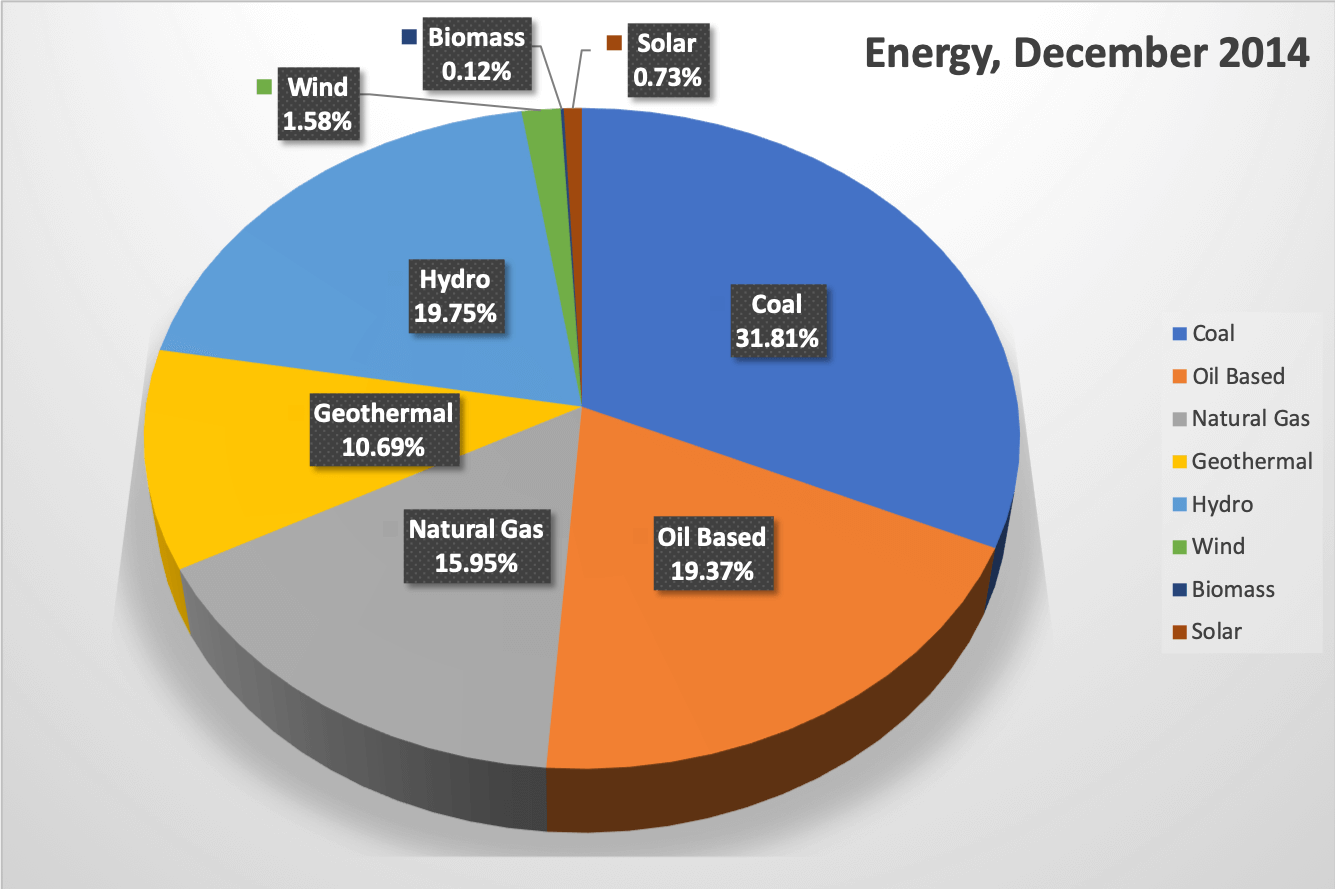-
RESOURCES
-
-
Energy
As the economy continues to expand, the Philippine energy consumption is expected to grow. As of December 2014, the Philippines had a total of 17,944 MW installed capacity with an energy mix as demonstrated in the figure below:

The entire country’s energy generation was recorded at 77,261 GWh in 2014. This covers generation from the grid‐connected plants from the three main grids as well as embedded and off‐grid generations. Meanwhile, renewable energy‐based plants such as wind, solar, and biomass have small share totaling to 0.47% or 364 GWh of the total generation. Source-wise generation profile of the Philippines is presented in the table below. Energy is generated in the three main islands: Luzon (56,766 GWh); Visayas (11,014 GWh) and Mindanao (9,481 GWh). (Department of Energy, 2014)
Electricity consumption for the year 2014 in the Philippines by sectors as well as accounting for electricity losses is presented in table below. Industrial and residential sectors were the major sources of power consumption in the country.
In year 2000, the energy sector released 43.73 MtCO2e (excluding transport sector) per SNC. The sector contributed 55.7 MtCO2e of GHG emissions in year 2010 per the USAID B-LEADERS, which is 27% increment from the year 2000.
For additional information on the Sectoral Climate Change Mitigation Action for the Energy sector, please contact Department of Energy - Energy Planning and Policy Bureau at [email protected] or [email protected].